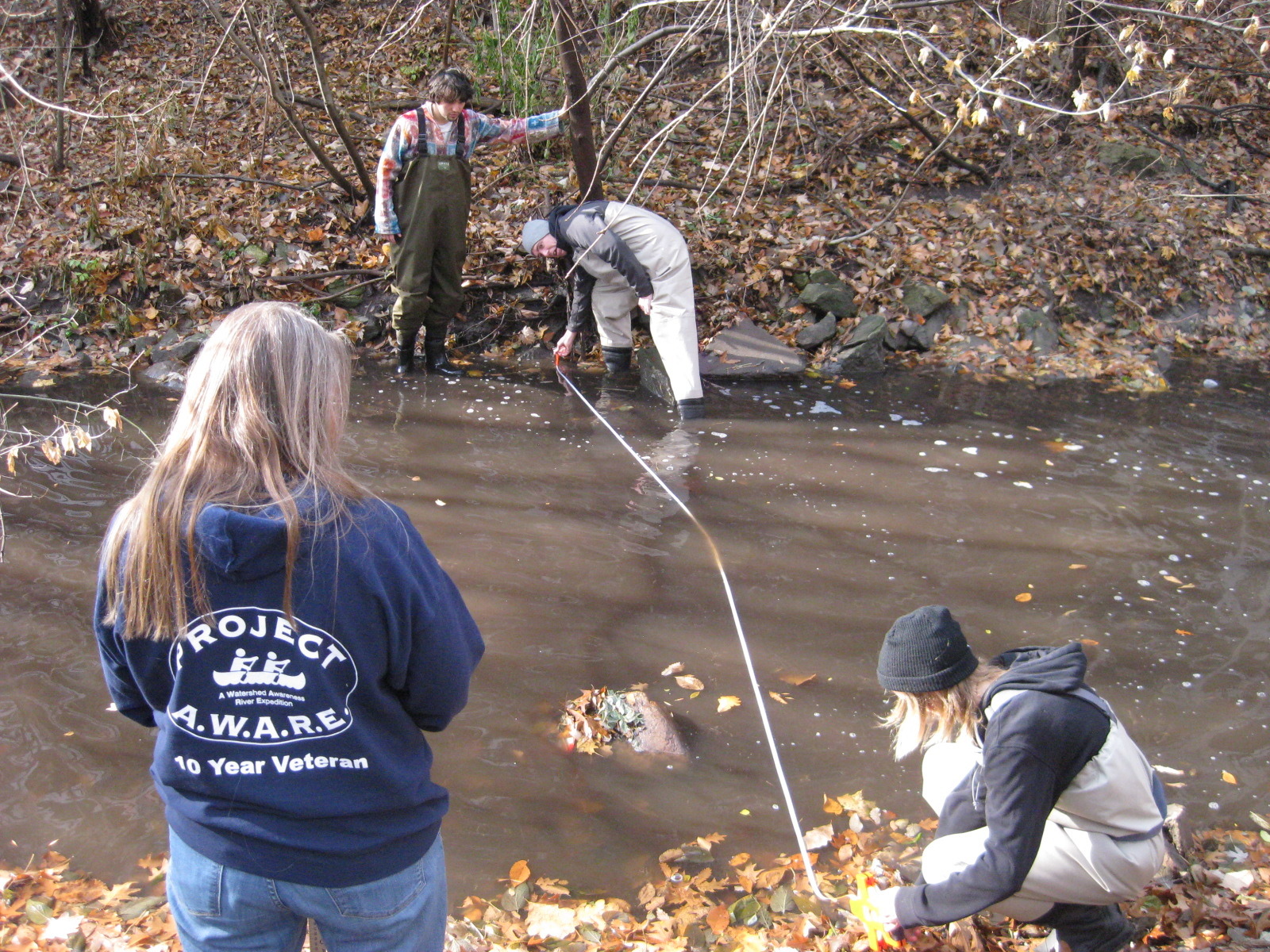
ISU environmental science students learn from Iowa Department of Natural Resources personnel to take water samples. Photo courtesy of Hannah Julich. Larger image.
AMES, Iowa – Iowa State University students enrolled in new environmental science courses will monitor the health of several streams that pass through campus this semester.
The effort is being implemented as a two-semester sequence of courses for the Science of the Environment and Sustainable Systems Learning Community, a group of first-year and transfer students studying environmental science. The program is designed to provide early career students in environmental science with both classroom instruction and practical experience, said Hannah Julich, a graduate assistant in ecology, evolution and organismal biology and the instructor of the courses.
During the second semester of the sequence, which began last month, students will measure the impact of the ISU campus on the health of local waterways. As part of the effort, students will take monthly water samples at eight stream sites on campus and analyze the samples for nitrates, phosphates and other key water quality parameters.
The water quality testing will complement the classroom-oriented aspects of the courses and give the students a sense of how science can shape public policy, Julich said.
The 28 students enrolled in the course will be divided into teams, and each team will use self-contained kits to take water samples from one of the eight testing locations. Taken together, the samples will paint a picture of what happens to water as it passes through campus.
The kits were made possible through collaboration with the ISU Department of Environmental Health and Safety, the ISU Wetlands Research Lab and the Iowater program, a volunteer water monitoring effort by the Iowa Department of Natural Resources.
The student teams will summarize their results in posters available for public viewing to complete the project, and those results will be given to the ISU Department of Environmental Health and Safety to supplement the department’s routine monitoring of water quality on campus.
The water quality testing is a good way to show students what the environmental science program is about, said David Green, also a graduate assistant in ecology, evolution and organismal biology.
“That’s something a lot of programs don’t do in the first year,” Green said. “Sometimes students get into their second or third year before they really get a sense of how their field of study is applied in the real world.”
The learning community, combined with the two-semester structure of the courses, also gives upperclassmen in the environmental science program a chance to gain leadership experience as peer mentors who work with the students. This year’s peer mentors – Molli Wienhold, Molly Zelinskas, and Mariah Mahaney – assist Julich with classroom activities and guide students in the program.